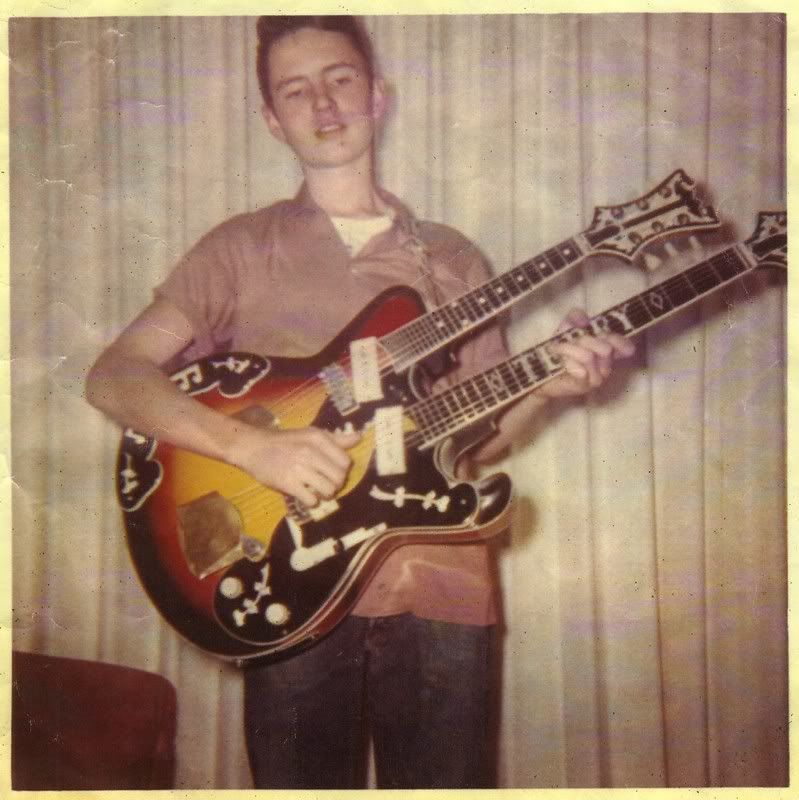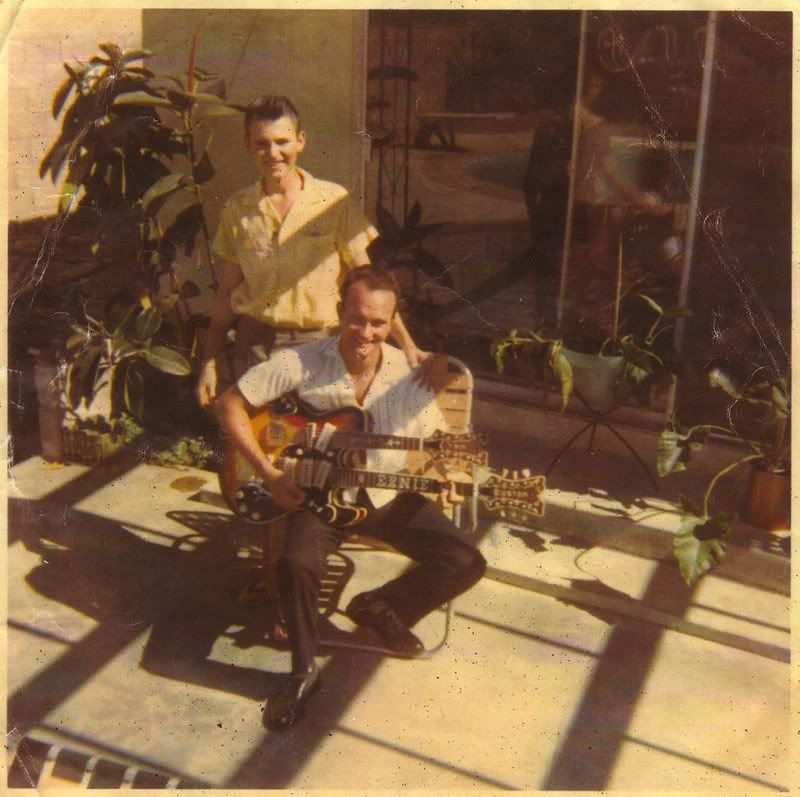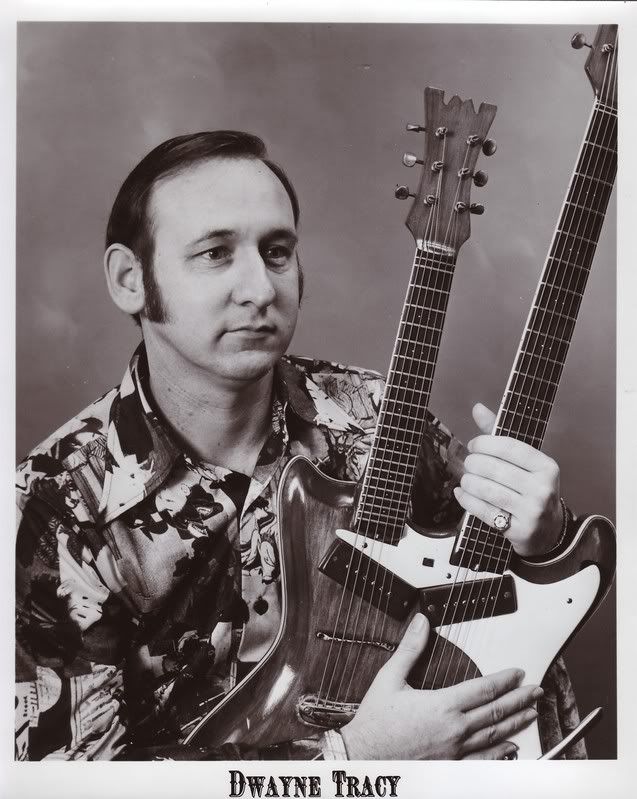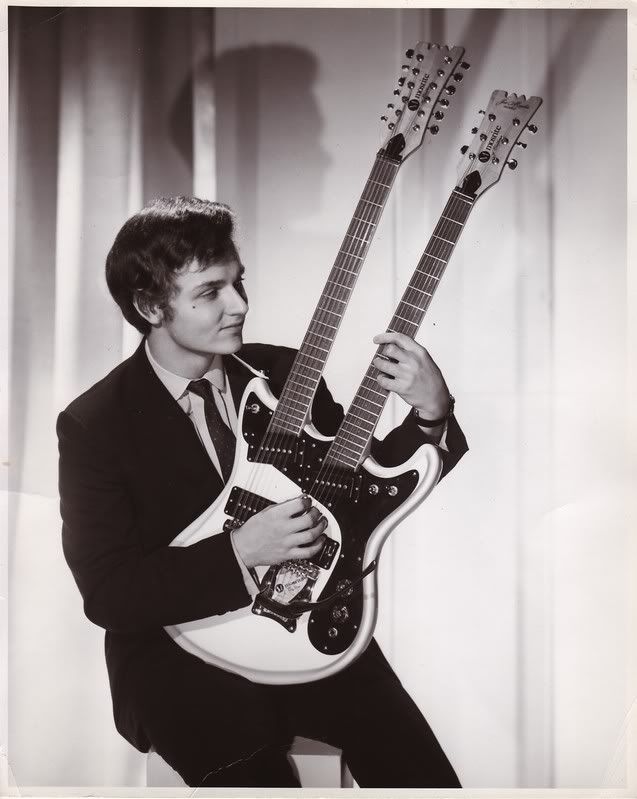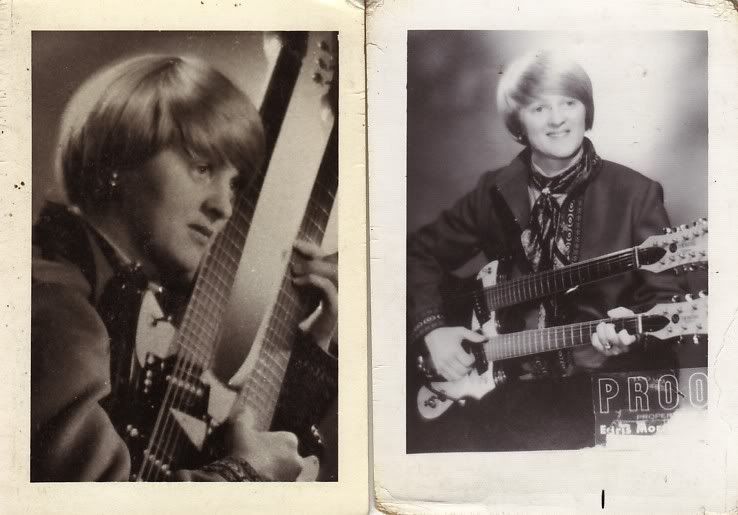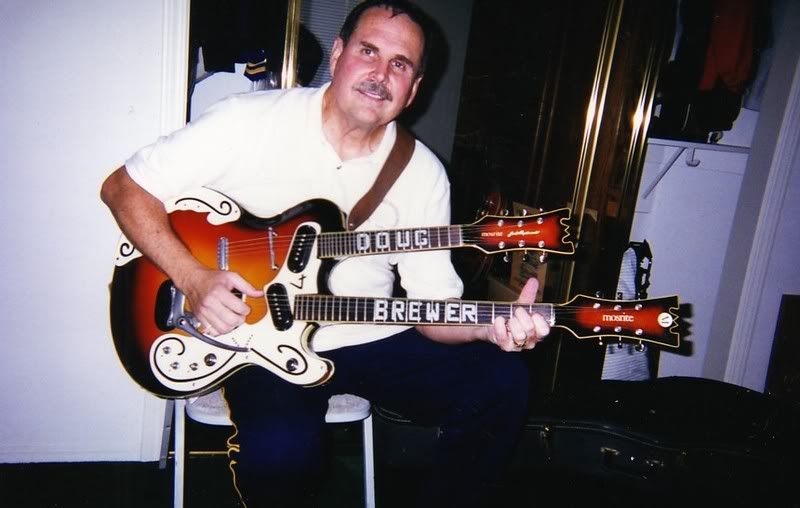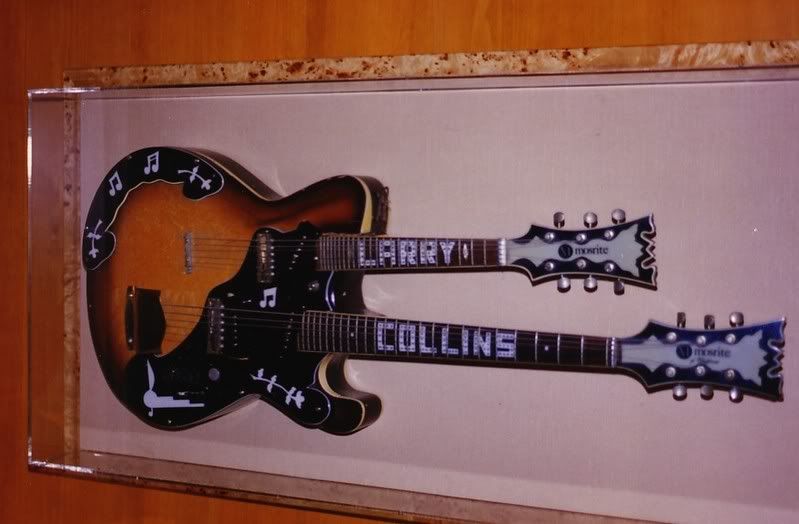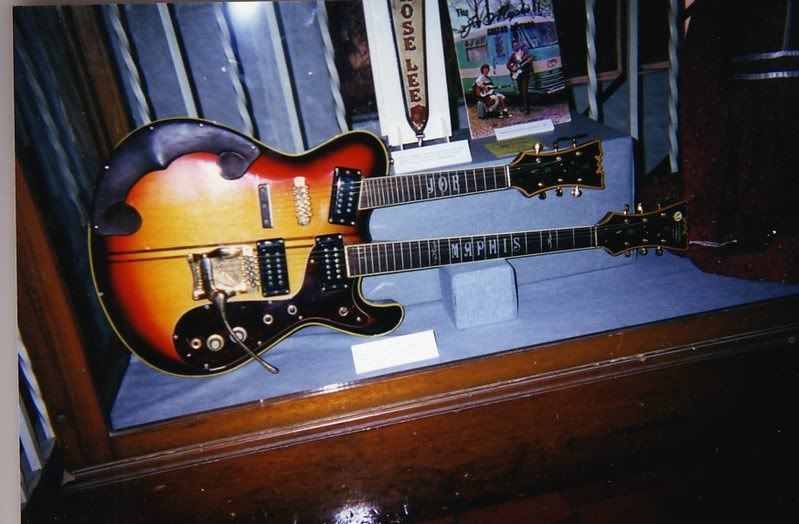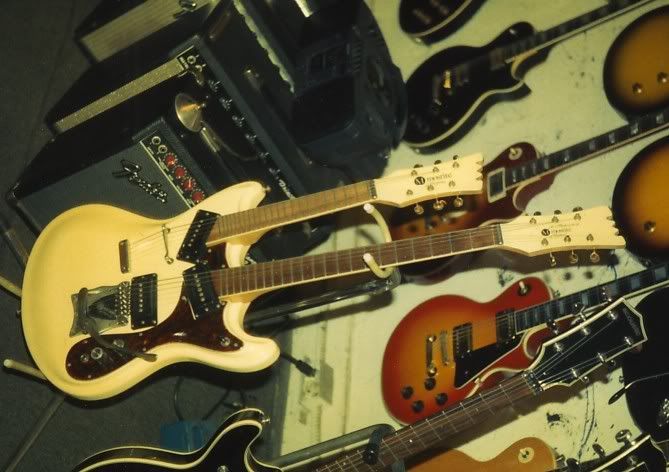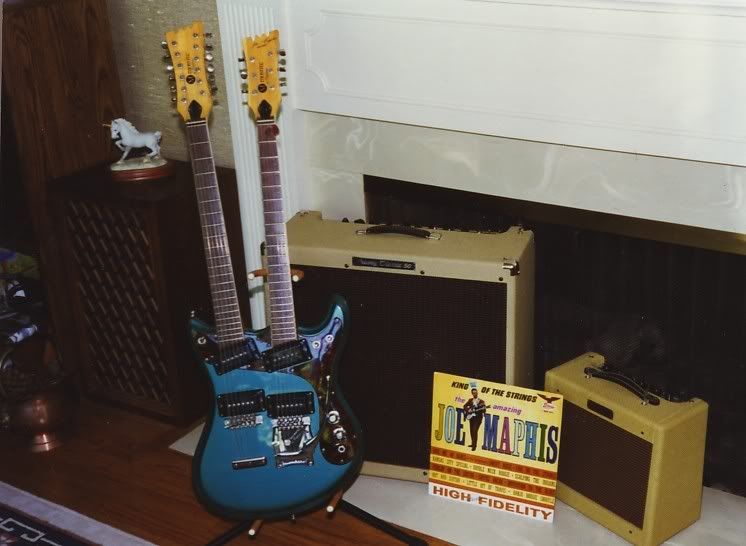First of all a little historical perspective might help. Back in the late 40's and early 50's Les Paul had a bunch of instrumental hit records like "Lover" and "Brazil" etc. along with vocal records with his wife Mary Ford--"The World Is Waiting For The Sunrise," "How High The Moon," etc. These records featured a very high pitched guitar which Les achieved by overdubbing at half speed, so when the tape was brought back to normal speed the guitar was an octave higher and very fast.
Semie couldn't figure out how Les Paul was doing this, so he reckoned he must have a "little guitar" to achieve those effects. Hence, the octave neck! Semie put an octave neck on his first tripleneck (along with a mandolin and guitar), and then put an octave neck on Joe Maphis' original doubleneck.
Now, Joe could play the crap out of the octave neck, because he could play anything. Half the time Joe played it like some tiny guitar, half the time he approached it like a mandolin. Joe used his octave neck all the time.
But realistically, not that many guitar players had a use for the octave neck. Probably more country players had a use for a mandolin neck on top, since most of them doubled on mandolin. Most rock & rollers could have used a 6-string bass or later on, the 12-string.
Other than Joe & Larry Collins and Brian Lonbeck, I dont' really see too many players using the octave neck or incorporating it into their music.
It was a no-brainer for Semie to put the 12-string necks on the production doubleneck, because by 1966 the sound of the electric 12-string guitar was all over the radio with bands like the Beatles and the Byrds all using them. I think the electric 12-string was at it's peak from 1965-1970.
Then again, the purpose of the multi-necked guitar is mainly just to look cool, right?
Look at Rick Nielsen's (Cheap Trick) 5-neck guitar. Wonder how much he uses the fretless guitar? ha.
Deke
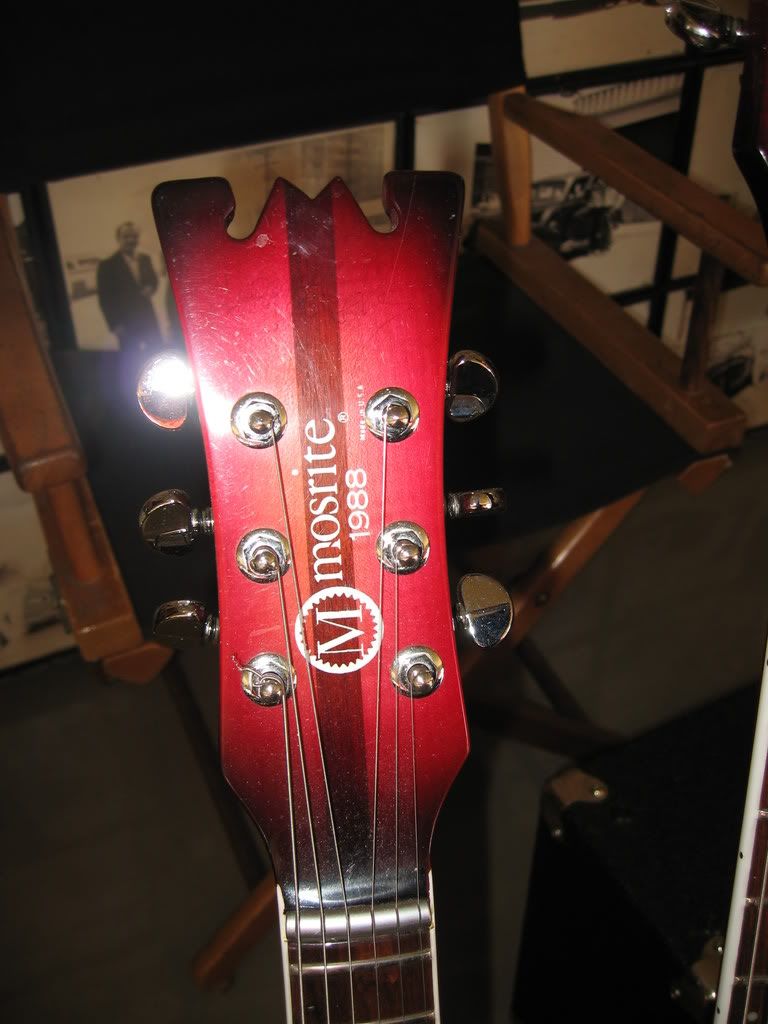
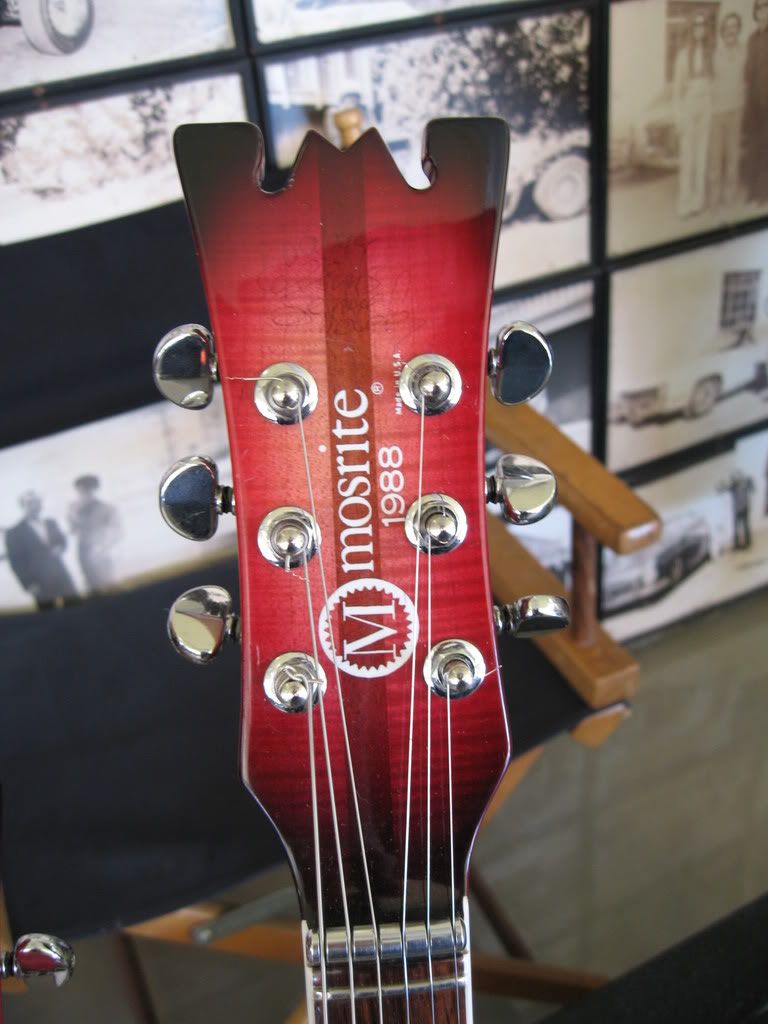

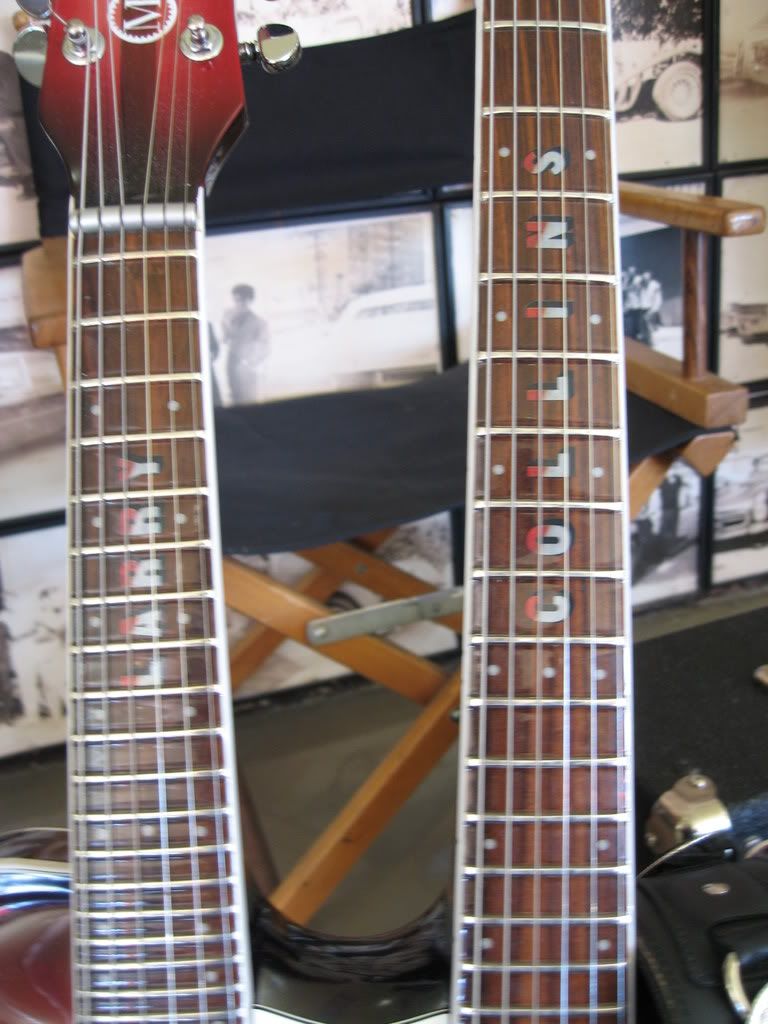
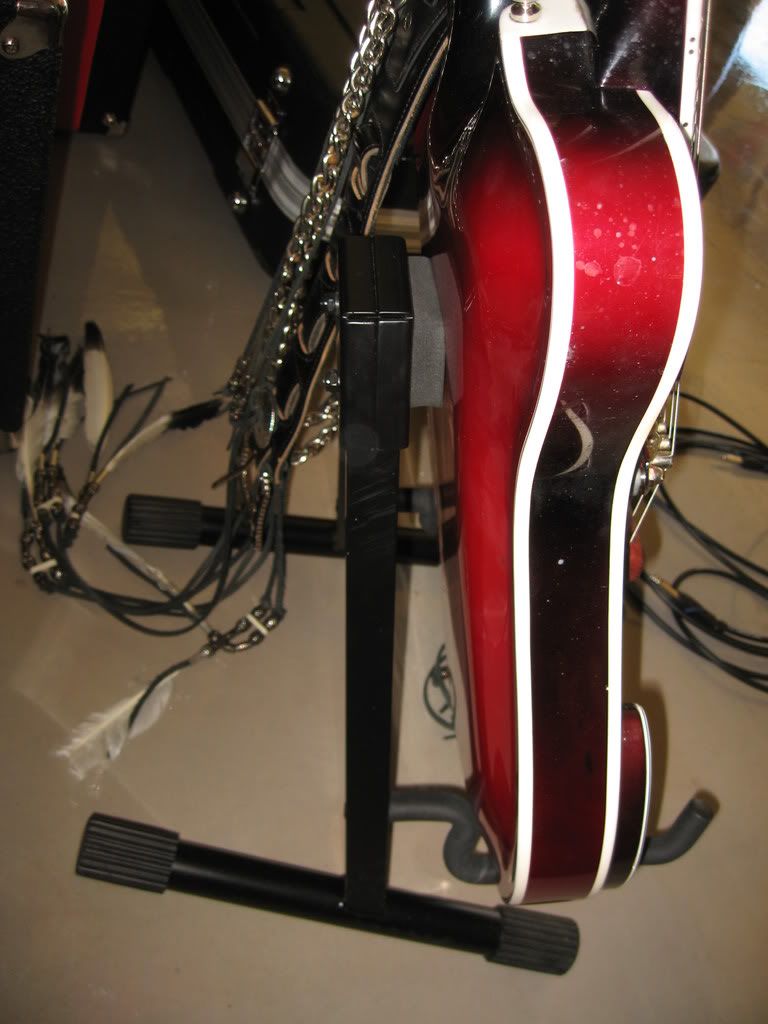
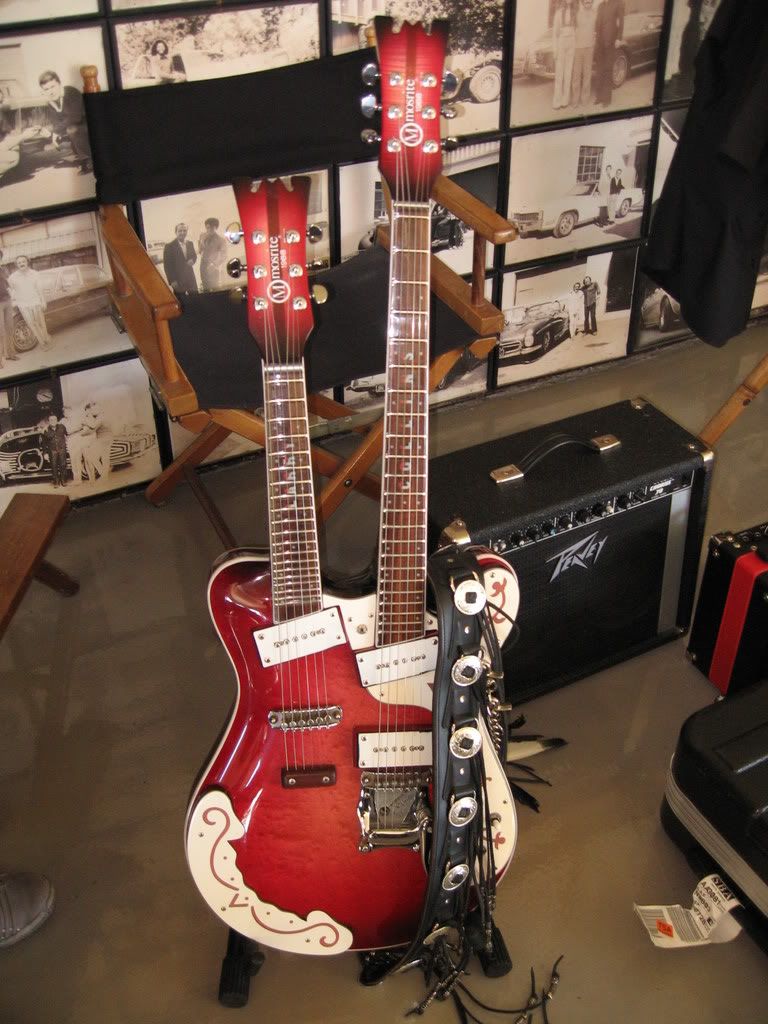
 [/url][url]
[/url][url] [/url]The coolest!! Davie Allan making the 12-6 look as tuff as you can. Dig the smirks and total punk attitudes. Churning out biker fuzz soundtracks non stop can take it's toll on a person. Davie is really a mellow low key guy nothing like these photos would imply. Check out the Sundazed Devils
[/url]The coolest!! Davie Allan making the 12-6 look as tuff as you can. Dig the smirks and total punk attitudes. Churning out biker fuzz soundtracks non stop can take it's toll on a person. Davie is really a mellow low key guy nothing like these photos would imply. Check out the Sundazed Devils